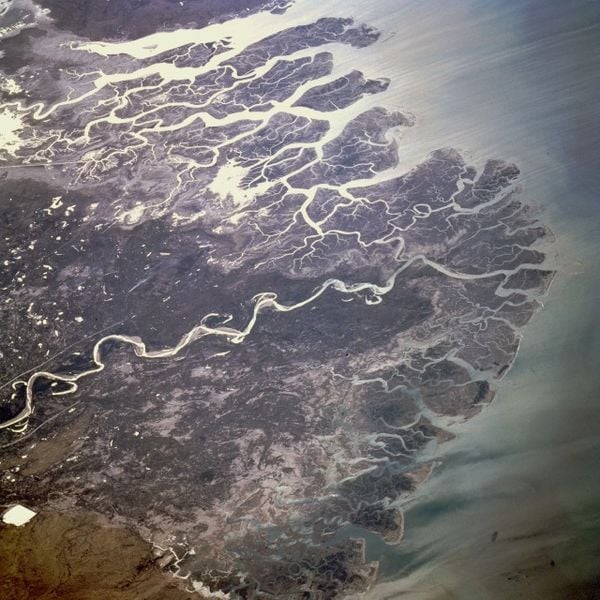Despite wars and decades of general hostility, the Indus Waters Treaty between Pakistan and India has held for 54 years. The treaty has also survived allegations that India is ‘stealing’ Pakistan’s water, and that India was behind the recent destructive flooding in the Chenab. On his return from India last week, Pakistan’s Commissioner for Indus Waters, Mirza Asif Baig, spoke to Dawn. The following are his views:
Q. What was the purpose of your recent India visit?
A. We’re discussing five run-of-the-river hydropower projects that India plans to build, or is already constructing, on the western [or Pakistani] rivers. Four of those projects — Ratle, Pakal Dul, Lower Kalnai and Miyar — are on the Chenab and one — Kishanganga — on the Neelum [a Jhelum tributary]. We’ve some objections to the project designs and features and they have given us their justifications. These visits are important because they provide us exact information on the status of project construction, design features and site conditions.
Q. What are Pakistan’s objections to these projects?
A. They mostly pertain to violations of the design criteria spelled out in the treaty and the storage projects the Indians are building on the western rivers. So far, India has started construction work only on the Ratle hydropower project. The work on the remaining three projects on the Chenab is yet to begin. The treaty allows India to create storage of 2.85MAF [million acre feet] during normal river flows and increase it up to 3.7MAF to store floodwaters. The first such capacity of 0.09MAF is now being built at Pakal Dul.
Q. How valid are our objections?
A. Let me clarify that we aren’t objecting to India’s right under the treaty to construct run-of-the-river hydropower capacity; our concerns pertain to project designs. And in our view the designs violate the treaty’s design criteria — some very grossly and others significantly. We won’t reject reasonable justifications but we will also not forego the rights the waters treaty gives us.
Q. In the past Pakistan has twice gone for international arbitration on the Kishanganga and Baghlihar projects. In both cases, the neutral expert rejected our stand.
A. That perception isn’t totally correct. In the case of Kishanganga we wanted the neutral expert to determine if India was permitted to build the dam at all. We believed that its construction would adversely impact our downstream hydroelectric use, as well as cause serious damage to our agriculture, which would violate the treaty. The expert allowed India to go ahead with the project. But it also provided Pakistan some relief by binding Indians to release 9 cumics [1cumic is equal to 35.314cusec] of water from the dam during low-flow season. Our case would’ve been much stronger if we had completed the Neelum-Jhelum project before India launched that project. But we had financing problems.
On Baghlihar, we went to the international court for a decision on whether India was allowed under the treaty to lower the water level in reservoirs of run-of-the-river hydropower projects on the western rivers for drawdown flushing. Our stand was that such a right could damage our hydropower turbines downstream and, thus, was a violation of the treaty. Our point of view was declared valid; it was a major win for us.
Q. There are many, especially some religious and farmer groups, who believe India is stealing our share of water. How valid are these accusations?
A. Some pseudo-water experts are spreading this notion. India will never do so because it would lose face globally. Our own response will not be subdued if it happens. Having said that, India has developed 110,000 acres of agricultural land along its side of the Jhelum [Kishanganga] river. This is within the parameters of the treaty. The Jhelum is the only [Pakistani] river where we face inflow reduction of 1MAF at Mangla. But this reduction has resulted not because of development of agricultural land on the Indian side alone. We have also developed some land for agriculture.
Q. Do you think India is responsible for the recent devastating flooding in the Chenab?
A. No. India doesn’t have significant water storage capacity on the Chenab. There has also been massive damage owing to flooding on the Indian side. Such manipulation would put their [irrigation and flood control] structures in jeopardy.
Q. Do you agree with those who say Indians are reluctant to share their water outflow data with us?
A. We think that the data transmission mechanism between India and Pakistan has improved over the years. Though India isn’t interested in the installation of the telemetry system, the two countries are discussing this issue. As far as the transmission of flood information is concerned, they have very responsibly been transmitting it to us.
Q. Lately there have been calls for scrapping the existing water-sharing agreement with India and negotiating a more effective one to protect Pakistan’s interests. What do you think?
A. I guess the demand is being made in the context of climate change. It’s a timely demand. But I wouldn’t go as far as scrapping the present agreement. Such a radical step will create an uncertain environment regarding the sharing of waters between Pakistan and India. Both will always continue to need a mechanism to share the waters. Scrapping the treaty is no solution; introducing modifications in it is.
This article was originally published in Dawn.
